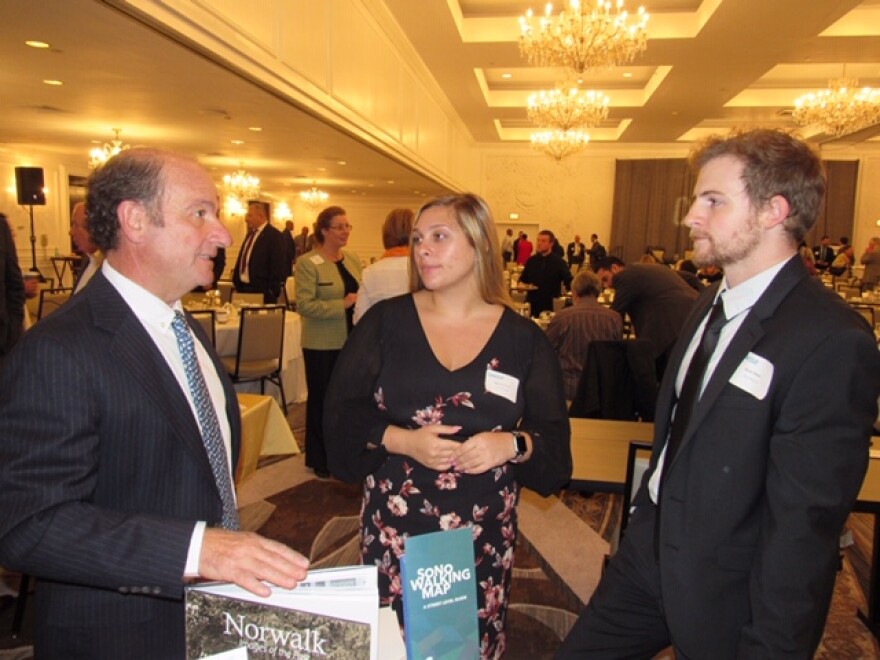Connecticut cities are still trying to figure out how to attract investors to low-income areas with a big tax credit. The so-called "opportunity zones" were created by the Trump administration two years ago so investors could avoid capital gains taxes.
At the Omni Hotel in New Haven, developers, investors and financial consultants browse display booths set up by 27 Connecticut cities and towns.
Edward Lavernoic, president of the Bridgeport Economic Development Corporation, explains some of the projects he's pitching at his booth.
“We have three featured projects today. One in the West End, which is a mixed-income housing project that’s going to reclaim and repurpose some iconically bad buildings on I-95 in the West End.”
The two others are on the East Side of Bridgeport. They include Steelpointe on the harbor that already has several buildings up and a mixed-use development anchored by a grocery store.

Bridgeport is competing with 60 other neighborhoods across Connecticut that the state has designated opportunity zones. Three of the neighborhoods are in Norwalk, a city with a median income of more than $81,000, nearly double that of Bridgeport.
“We have more development happening in SoNo around our train station,” says Sabrina Church, Norwalk’s business and tourism development director. She’s talking about South Norwalk – or SoNo – not to be confused with SoHo in Manhattan, but all the same a trendy neighborhood that’s attracted lots of investment.
“We are also looking to grow in our northern part of our urban corridor, which is the Wall Street, West Avenue area, which is kind of just north of where our new mall just opened.”

Cory Grossman says Norwalk is attractive. He’s with Four Seasons Construction, a company that invests $30 million to $70 million a year on hotels and high-density luxury housing.
“In all fairness, they have a direct affiliation with New York, especially New York City, Manhattan, the five boroughs. And if you come further along up the shoreline, it’s not as vibrant.”
That doesn’t sound good for Bridgeport, which is further along on the shoreline.
But Bruce Katz says Bridgeport still has an opportunity to market itself.
“This is not just about the investors, this is about the communities...and what kind of vision they have for their redevelopment.”
Katz is with Drexel University. He’s studied the Trump administration’s opportunity zone policy.
“It’s introducing a kind of long-term investment into communities that tend to have investors who just come in for the near term, short term. They buy a property. They flip it. That doesn’t help anyone.”
Investors have until the end of the year to get the maximum tax benefits. David Lehman, the state commissioner for Economic and Community Development, says there are still two more years for investors to get involved.
“This is the start of a conversation, is how I think about it. And we think this is just a significant opportunity for the state, and we are convening all of the right folks.”
In the meantime, Republican lawmakers in Washington, D.C., are discussing the possibility of another tax cut for 2020 that might have more such tax incentives.




